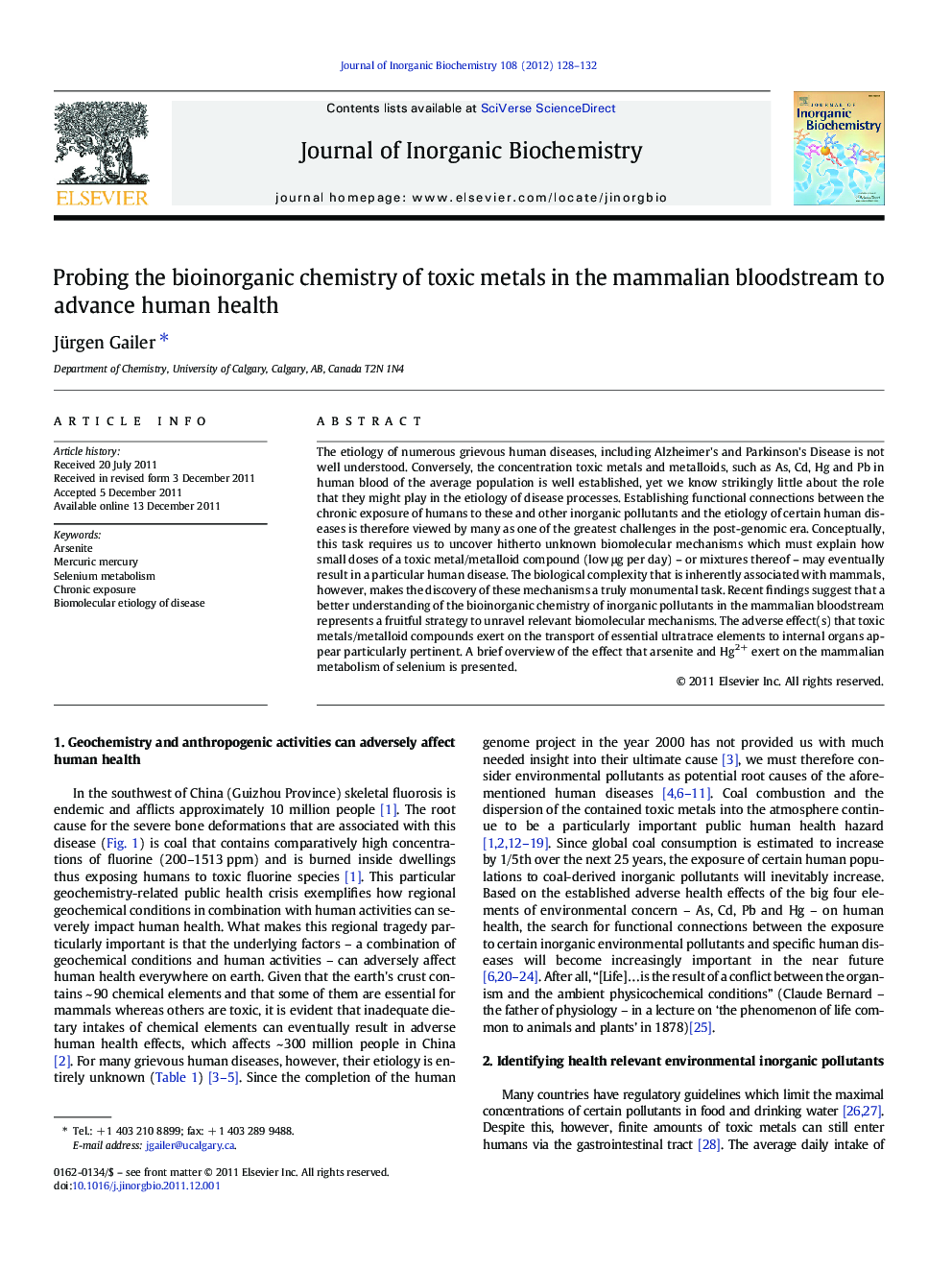| Article ID | Journal | Published Year | Pages | File Type |
|---|---|---|---|---|
| 1317807 | Journal of Inorganic Biochemistry | 2012 | 5 Pages |
The etiology of numerous grievous human diseases, including Alzheimer's and Parkinson's Disease is not well understood. Conversely, the concentration toxic metals and metalloids, such as As, Cd, Hg and Pb in human blood of the average population is well established, yet we know strikingly little about the role that they might play in the etiology of disease processes. Establishing functional connections between the chronic exposure of humans to these and other inorganic pollutants and the etiology of certain human diseases is therefore viewed by many as one of the greatest challenges in the post-genomic era. Conceptually, this task requires us to uncover hitherto unknown biomolecular mechanisms which must explain how small doses of a toxic metal/metalloid compound (low μg per day) – or mixtures thereof – may eventually result in a particular human disease. The biological complexity that is inherently associated with mammals, however, makes the discovery of these mechanisms a truly monumental task. Recent findings suggest that a better understanding of the bioinorganic chemistry of inorganic pollutants in the mammalian bloodstream represents a fruitful strategy to unravel relevant biomolecular mechanisms. The adverse effect(s) that toxic metals/metalloid compounds exert on the transport of essential ultratrace elements to internal organs appear particularly pertinent. A brief overview of the effect that arsenite and Hg2+ exert on the mammalian metabolism of selenium is presented.
Graphical abstractAnthropogenic activities emit toxic metals into the environment which are projected to increase. The concomitant exposure of various human populations is of much public concern, especially since the prevalence rates of certain diseases are rising. To establish functional connections between toxic metals and specific diseases, however, one must identify relevant biomolecular mechanisms. The formation of compounds with As–Se and Hg–Se bonds in the bloodstream strongly suggests that a better understanding of the bioinorganic chemistry of toxic metals will contribute to advance human health.Figure optionsDownload full-size imageDownload as PowerPoint slide
